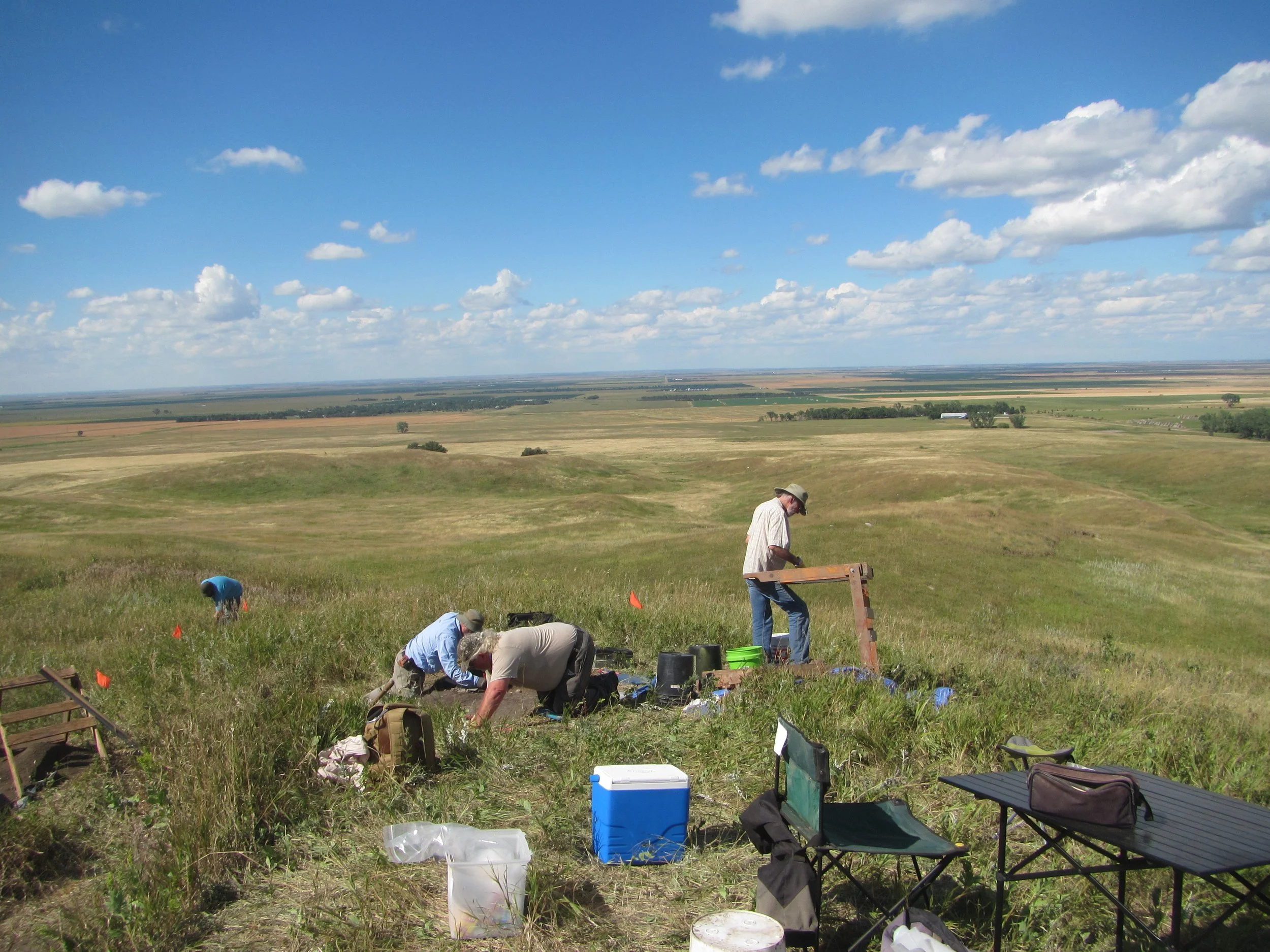The Archaeology Laboratory, Augustana University, with the support of the South Dakota State Historical Society and South Dakota Archaeological Society volunteers, recently conducted archaeological research associated with a National Register of Historic Places nomination of a bison kill site in central South Dakota. An initial component of the research aiding in preparing the nomination involved conditioning a digital elevation model (DEM) to more accurately reflect the landscape before the construction of modern transportation, communications, and agricultural infrastructure by eliminating roads, telecommunications tower footings, and stock dams, from the model.
The conditioned DEM was used to generate least-cost paths and perform viewshed analyses to identify locations most likely to have been used as bison drive lanes. Though this study’s outcomes are inconclusive in terms of explaining how the site functioned, its DEM conditioning results for approximating a landscape without modern infrastructure are visually compelling and its investigation of least-cost paths and viewshed analyses results further demonstrates how both can work in tandem to help explain how bison kill sites may have been used by South Dakota’s indigenous inhabitants ~800 years ago.
About Alec:
Alec holds a Master of Science in Applied Anthropology, in addition to a Graduate Certificate in Geographic Information Sciences, from Minnesota State University, Mankato. He received his Bachelor of Arts in Anthropology, with Minors in History and Archaeology, from the University of South Dakota. Alec has considerable experience completing a range of different archaeological projects in the Great Plains and Upper Midwest; he has participated in National Register of Historic Places (NRHP) evaluations and one NRHP nomination and contributed to research projects undertaken for the State of South Dakota.
Alec has also assisted with countywide archeological research projects conducted on behalf of History Nebraska and the Minnesota Historical Society, as well as numerous Section 106 undertakings throughout South Dakota, Minnesota, Nebraska, and Iowa. Since 2014, he has regularly completed field investigations involving pedestrian surface survey and subsurface testing and has contributed to excavating many formal test units. Alec is well-versed in the operation of a range of different high- precision mapping instruments, such as total stations and various GNSS devices capable of recording archaeological geospatial data with sub-decimeter accuracy using global coordinate systems. He is knowledgeable in geospatial predictive modeling and has coauthored documentation of modeling
efforts for Phase 4 of the Minnesota Department of Transportation’s MnModel project. Alec is experienced at processing LiDAR data and has created digital elevation models and hillshades with 1- meter spatial resolution for multiple localities, including entire counties, in the Midwest and Great Plains.
Alec’s primary responsibilities with the Archaeological Research Center are conducting GIS record searches, creating site and project maps, managing the Archaeological Resources Management System’s (ARMS’s) online component, and supporting the maintenance of the State of South Dakota’s archaeological geodatabases.
Click the button to learn more about the Archaeological Research Center.

